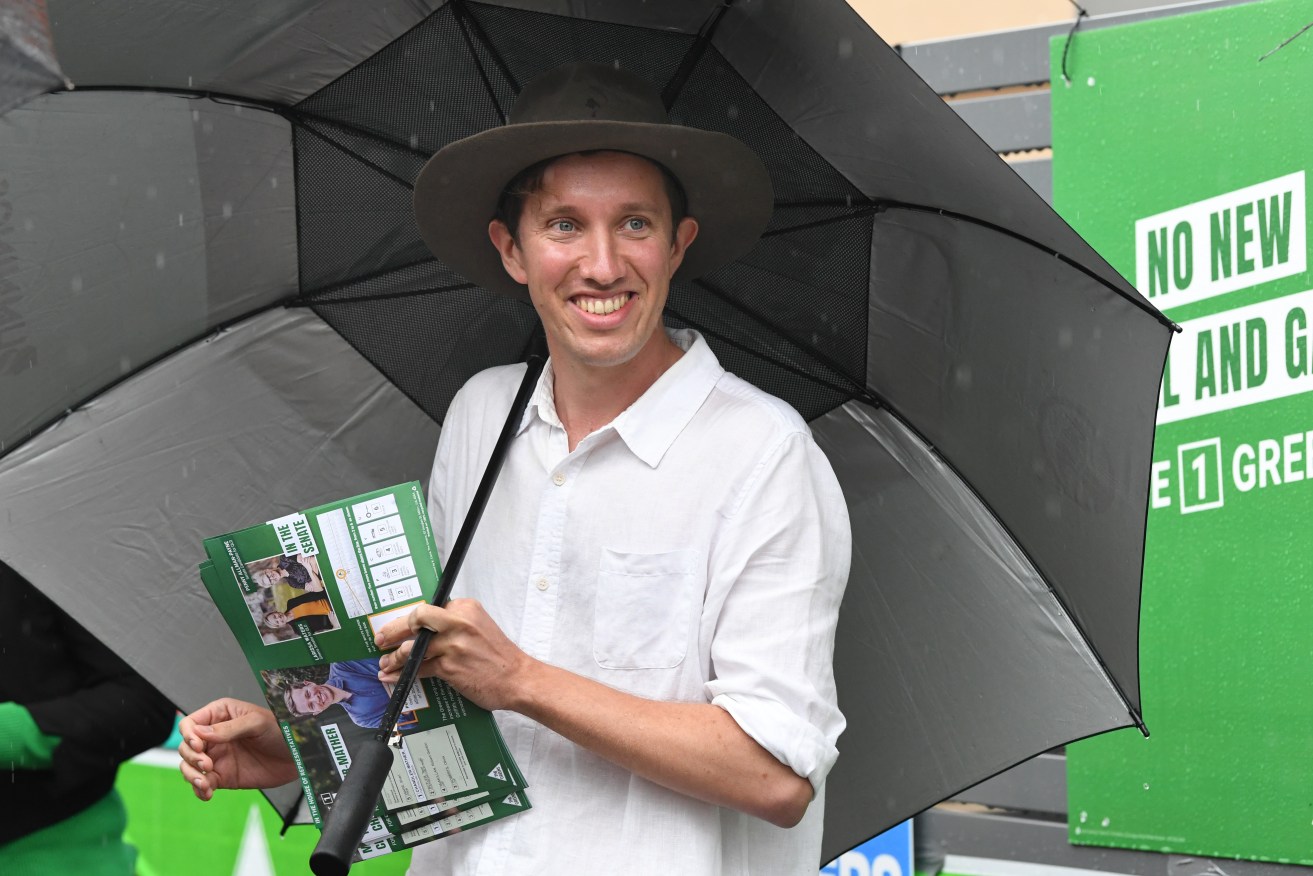Queensland gets greener, but remains a political wasteland for Federal ALP
Queenslanders can throw up election surprises even if the state outcome doesn’t change the parliamentary numbers.
While nothing was final late on Saturday night, the scene in Queensland looked clearer than most other states (with noted and contrary exceptions in Tasmania and Western Australia).


Max Chandler-Mather, Greens candidate in the seat of Griffith is seen handing out how to vote leaflets at the Brisbane State High polling booth on Federal Election day in Brisbane. (AAP Image/Darren England)
Queensland Labor went in with six seats and appears to be sticking with that number but only after winning one and losing one.
Labor’s high flying Terri Butler has almost certainly lost Griffith – seat of former prime minister Kevin Rudd – to the Greens Party’s Max Chandler-Mather. Butler, the ALP’s environment spokeswoman, was thought to have a big future but now that will be outside parliament.
This is part of the “Greening of Brisbane” something that’s been coming but most observers (including this columnist) regarded it another electoral cycle away.
The Brisbane greening swept from eastern suburbs like Morningside, Bulimba and Hawthorne, jumped the river from West End and Kangaroo Point and then kept going through Milton, Toowong, Paddington and out into the leafy western suburbs.
The new money suburbs of the inner east of Brisbane and the old money suburbs to the west of the river have gone Greens.
While the outcome for the CBD based seat of Brisbane is still uncertain, Labor might snatch it. Whatever happens, Brisbane (including suburbs like Ascot, Hamilton and Clayfield) has either gone to Labor on the back of the preferences of Greens or straight to the Greens.
These electoral swerves and swirls happened in Queensland perhaps because of the absence of any “teal/Climate 200” candidates who rampaged through Sydney and Melbourne. It’s a counterfactual but the damage to the Liberal heartland is the same.
Overall Queensland is an unexpected result and belies what we were told by the polls which failed to work out how people were going to vote with so many “other options” – offered by a mix of the One Nation and United Australia parties running in all or almost all 151 seats, the Greens vote surging across metropolitan Australia and not confined to inner-city enclaves and a dozen or more candidates in so many seats.
This failure to move the dial in Queensland (while still moving the dial, if you’ll pardon the cognitive dissonance) shifted the outcome of the election to New South Wales, Victoria and South and Western Australia.
Queensland didn’t give Labor a boost. It looks like the statewide vote could only climb a couple of points but still will almost end up well below 30 percent. At the same time the LNP has seen its primary slump by around 10 points.
It’s a reversal of the old carnival alley spruiking line: everyone’s a loser (expecting the Greens).
Also, Labor has failed yet again to get any seats north of Kilcoy. They don’t have any coal seats, they have no seats around the big northern centres of Townsville and Cairns and they have none of the coastal communities from Noosa to Cooktown.
Labor needs to face up to two things in Queensland while the LNP has even more existential questions to address.
Labor has to better balance its appeal on two difficult to reconcile fronts. They need to talk to the higher income, more highly educated inner city dwellers while also having a conversation with the more suburban aspirational voters outside that inner ring.
Concurrently, Labor must work out how to engage with and excite the vast numbers who live outside the South-East – something essential in Australia’s most decentralised state.
Queensland Labor’s dramatic underperformance is even more stark when measured against the other usual ALP laggard – Western Australia which soared and will probably deliver government to the ALP.
At the same time, the LNP has to work out how it can either rebuild its heartland, reshape itself in the outer suburbs while also making very fundamental decisions about when (not if) to reassess the value of the Liberal/Nationals merger.
This is an election in which nothing has really turned out as expected – except perhaps the Labor rout in the West.
As a result everyone has something to learn from the outcome and some hard thinking in the months and years ahead.












